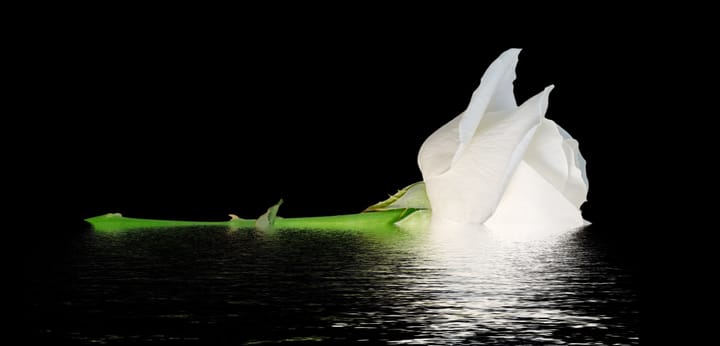What first inspired Between Mirrors? Was there a moment or image that sparked Claire’s journey?
Mirrors are imperfect copies of reality; their reflective surfaces have their own properties, which catch the light in ways different from the eye’s.
You assume you know what’s there, but upon a closer look, you discover tiny differences between the actual image and the reflected one: glares, shadows, depth distortions. I’m sure most people don’t take the time to notice them, but once you see them, you can’t stop seeing them. It was a fascinating revelation for me to discover that what we think we see isn’t always there.
It’s like there’s another world behind the glass, a virtual world we can watch, but we can never enter.
The novel blurs the line between perception and reality. What does that “space between” represent for you?
Our eyes are just recording devices, which send information to the brain. It is the brain that tells us what we see, and the brain exists in different states - awake, asleep, relaxed, distracted, overloaded.
The space between dream and reality, which we experience right before we awaken or when we’re in a deep meditative state, is incredibly rich with symbolic imagery, unconscious fears and desires, visions and shadows.
The depth collapses to reveal the world as a tapestry of color and light. Minor details you never noticed before are brought to prominence. Things seem to happen in your peripheral vision.
I am fascinated by this perceptual liminal space.
Mirrors and memory are recurring motifs. What drew you to those images?
We all carry a wealth of memories, some of which we take to our graves, sometimes because they can’t be expressed in words, sometimes because we can’t allow ourselves to express them, and sometimes because there is no one left to share them with who can relate to their emotional message.
Old photo albums, hand-written letters from decades ago, memories of happy holidays, pictures of people and places that are no more. What do we do with all of those when the places and the people inside them are gone?
It’s easy to imagine our own treasure of meaningful moments becoming just a litter of papers and bits in our absence.
Our personal items stripped of the possessive pronoun that afforded them significance become somebody else’s clutter.
As far as mirrors are concerned, I really don’t know.
Your writing blends poetic imagery with emotional realism. How do you find that balance?
I love writers of magical realism like Gabriel Garcia Marquez, Paulo Coelho and Jorge Luis Borges.
I suppose they influenced my writing without my even realizing it.
Did writing Between Mirrors change the way you think about narrative or language?
I didn’t expect it to become an exploration of the psyche and Jungian archetypes when I started writing this book. It uncovered a lot of personal fears, motivations, and internal conflicts, and I feel older and wiser for writing it. It also stirred a lot of memories, both painful and sweet, and emotions long buried. I don’t know if it changed the way I think about narrative, but it changed me.
Claire is both an observer and a participant in her own unraveling. How did you approach writing her?
The story itself drew me in, like an Ariadne thread. Sometimes a book starts with an image, or a first line, and this was definitely the case with Between Mirrors. I simply walked through that door that was never properly closed, to Grandmother’s outrage, and let the imagery and the life behind it lead me to what it wanted me to see.
What do you hope readers take away from Between Mirrors
I hope it inspires people to cherish those things that are too personal, unusual or unrelatable to share: they are our hidden treasures; all our motivations, disappointments and drives, everything that makes us who we are, our very lives are built upon them.
How does Between Mirrors fit within your larger body of work?
As I grew older, my perspective changed, a bit of a turning inward, maybe, to sort out what really matters and what to do with all the experiences I lived through so far. I feel like writing Between Mirrors was a pivotal moment in my writing, towards exploring more of that.
Are there ideas from Between Mirrors that you’re continuing to explore in future projects?
Yes, as a matter of fact, I think I already have. Funny thing about delving into the unconscious, its contents pop up without one’s express permission, wearing different outfits but essentially the same message.
So, yes, I’m sure some layers of the Claire onion will make a surprise appearance in my writing at some point in the future.
Between Mirrors is available now through Francis Rosenfeld’s official site, where readers can also listen to the companion audio experience and explore more of her lyrical fiction.

